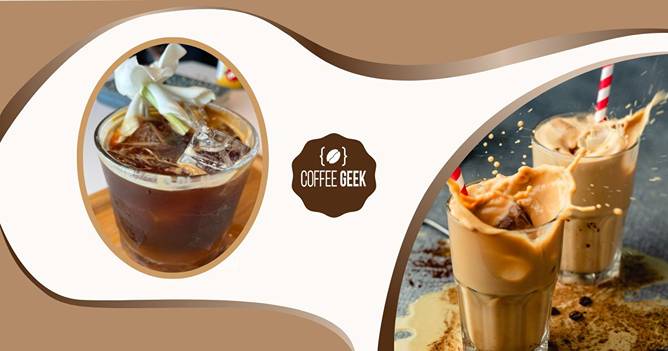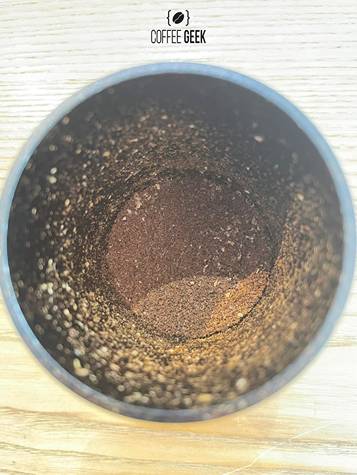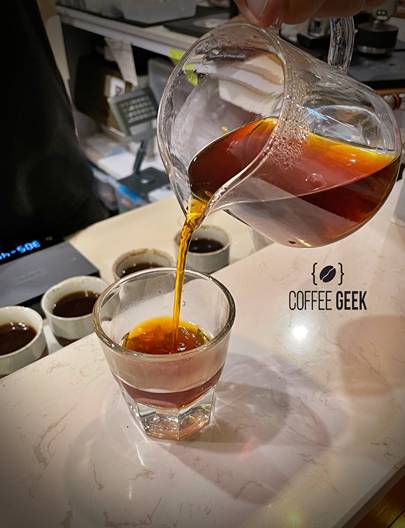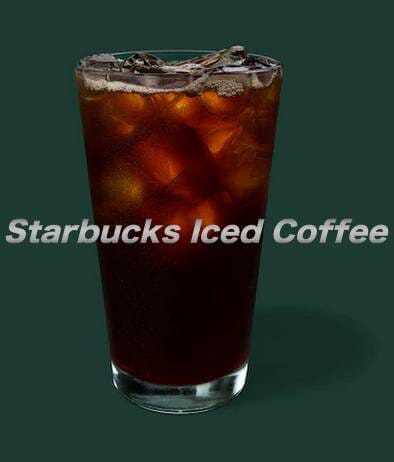Iced coffee is a popular beverage choice, especially during the warmer months.
Many people wonder does iced coffee have caffeine, as they might want to monitor their caffeine consumption or simply know what’s in their drink.
The truth is, iced coffee does contain caffeine, but the amount can vary depending on how it’s made, what type of coffee beans are used, and the serving size.
There are different types of iced coffee, such as cold brew and traditional iced coffee, which can affect the caffeine content.
Additionally, popular coffee brands may have varying levels of caffeine in their iced coffee products due to their unique brewing methods and bean choices.
It’s important to be aware of the caffeine content in your iced coffee, as well as the general safety recommendations for daily caffeine consumption.

Does Iced Coffee Have Caffeine – Key Takeaways
- Iced coffee contains caffeine, but the amount depends on factors like brewing method and serving size
- Different types and brands of iced coffee can have varying caffeine levels
- Be mindful of caffeine safety recommendations when enjoying iced coffee
Caffeine Content in Iced Coffee
Comparing to Hot Coffee
When it comes to iced coffee, one common question is about its caffeine content compared to hot coffee.
I find that the amount of caffeine in iced coffee is often slightly higher than in hot coffee.
A typical 16-ounce serving of iced coffee might have around 200 mg of caffeine, whereas a similar-sized hot ground coffee can have around 150 mg of caffeine.
The reason for this difference is due to the lower temperature and the ice used in iced coffee, it slows down the rate at which caffeine breaks down.
Effects of Brewing Time and Temperature

Brewing time and temperature also play a significant role in determining the caffeine content in your cup of iced coffee.
A longer brewing process and lower temperatures result in a higher caffeine concentration.
Cold brew coffee, for example, sits for an extended period at cold temperatures and is known to have relatively high caffeine levels.
In contrast, a shorter brewing time, like in brewing hot coffee, when hot water extracts less caffeine from the coffee grounds.
When iced coffee is made by simply pouring hot coffee over ice, the caffeine content may be closer to that of hot coffee.
But as Bustle suggests, the precise content of caffeine will depend on the brewing method and amount of coffee used.
To sum up, iced coffee generally contains more caffeine than hot coffee, but this difference can be influenced by factors like brewing time and temperature.
Keep these factors in mind to have better control over the caffeine content of your coffee, and enjoy the refreshing taste of iced coffee!
Types of Iced Coffee
As a coffee enthusiast, I love exploring various types of iced coffee drinks. I’ll share with you two popular categories of iced coffee:
Cold Brewed Coffee and Iced Espresso Drinks. We’ll talk about their differences, as well as how the beans and brewing methods affect the content of caffeine.
Cold Brew
Cold-brewed coffee is one of my favorite iced coffee options for its rich and smooth flavor.
To make cold brew coffee, instead of using hot water, I steep coarsely ground coffee beans in cold water for an extended period (typically 12-24 hours).

Personally, I prefer using medium to dark roast ground coffee beans for cold brew coffee, as these roasts bring out a smoother taste with lower acidity.
The slow and patient brewing process extracts a unique flavor profile from the beans while avoiding any bitterness.
I’ve found that, on average, a cup of cold brew coffee contains around 200 mg of caffeine per 16 ounces (473 mL), although it can vary between different brands.
Iced Espresso Drinks
Iced espresso drinks, on the other hand, start with a fresh, hot shot of espresso that is then poured over ice or blended with ice and other ingredients to create various refreshing beverages.
To make my iced espresso drinks, I use a fine grind, and the beans are usually a medium to dark roast.
The type of roast, as well as the brewing method, can affect the content of caffeine in an iced espresso.

Some of my favorite iced espresso-based beverages include:
- Iced Americano: A combination of espresso and cold water, typically served over ice.
- Iced Latte: A mixture of espresso, milk, and ice, often sweetened with flavored syrups.
- Iced Cappuccino: A blend of espresso, milk, and frothed milk foam, usually poured over ice.
Iced coffees such as these can still contain a significant amount of caffeine, which may be a concern for some.
It’s essential to pay attention to your own caffeine tolerance and choose your iced coffee drinks accordingly.
As a fan of iced coffee, I enjoy exploring different coffee beans, roasts, and brewing methods to create delightful and refreshing iced beverages.
So whether you prefer cold brew coffee or iced espresso drinks, there’s always an iced coffee drink to suit your taste and caffeine preferences!
Caffeine in Popular Brands
In my search for the caffeine content in popular iced coffee brands, I have come across some interesting information. Let me share it with you in the following two sub-sections.
Starbucks Iced Coffee Options
Starbucks offers a wide range of iced coffee options with varying content of caffeine.
Among their most popular iced coffee drinks, the caffeine content usually ranges from 95 mg to 280 mg per serving, depending on the size and type of drink.
For instance, their Iced Cold Brew coffee drinks contain around 200 mg of caffeine per 16 ounces, while a tall Iced Caffè Americano has approximately 150 mg.
Other Brands
There are many other well-known brands that offer iced coffee, such as Dunkin’ Donuts and McDonald’s.
The caffeine content in Dunkin’ Donuts and McDonald’s also varies, just like with Starbucks.
For example, Dunkin’ Donuts iced coffee has a content of caffeine of about 198 mg per 14 ounces, whereas a 22-ounce McDonald’s iced coffee contains around 200 mg of caffeine.
It is essential to keep in mind that the actual caffeine content of an iced cup of coffee can vary depending on factors such as processing and brewing time.
During my research, I found that iced coffees can have a wide range of caffeine content depending on the brand and drink size.
So when sipping on your favorite cold coffee, remember to be mindful of its content of caffeine and adjust your intake accordingly.
Caffeine Safety and Recommendations
As we talk about ice coffee and its caffeine content, it’s important that I discuss caffeine safety and recommendations too.
We need to consider different groups of people, such as adults, pregnant and nursing individuals, and children and adolescents.
Safe Daily Intake for Adults
For most healthy adults, the FDA suggests that up to 400 mg of caffeine a day is safe. That’s roughly equivalent to four 8-ounce cups of coffee.
For your iced coffee consumption, this may vary depending on the size and caffeine content of the specific brew coffee you’re enjoying.
Pregnant and Nursing Individuals
When it comes to pregnant and breastfeeding women, it’s advised to consume even less caffeine.
The American College of Obstetricians and Gynecologists recommends limiting caffeine intake to less than 200 mg per day during pregnancy.
As for nursing mothers, it’s still a good idea to stay within this range, since caffeine can be passed to the baby through breast milk.
Children and Adolescents
Caffeine is not recommended for children and adolescents, as it can interfere with their sleep and overall development.
The American Academy of Pediatrics discourages children and adolescents from consuming caffeine and other stimulant substances.
Therefore, it’s best to limit their exposure to iced coffee and other caffeinated beverages.
I hope this information helps you make informed decisions about how much caffeine is appropriate for you and your loved ones while enjoying tasty iced coffee!
Remember to stay safe and consume caffeine in moderation.
Additional Factors Impacting Caffeine Content
Type of Coffee Beans
When it comes to the caffeine content in iced coffee, the type of coffee beans plays a significant role.
There are two main types of coffee beans: Arabica and Robusta. Arabica beans are generally considered to have a smoother and milder flavor, while Robusta beans are known for their stronger taste and higher caffeine levels.
In general, Robusta coffee beans can contain nearly twice as much caffeine as Arabica beans.
So if you’re looking for an iced coffee with a caffeine kick, choosing one made with Robusta beans may be the way to go.
Serving Sizes and Customizations
Another factor that impacts the content of caffeine in iced coffee is the serving size and any customizations you may add to your drink.
A standard serving size for cold brew is typically 16 ounces (473 mL), which can contain around 200 mg of caffeine.
However, this can vary depending on how much coffee is used in the brewing process, as well as the size and type of the coffee.
For example, adding extra shots of espresso or choosing a larger drink size can increase the overall caffeine levels in your iced coffee.
Additionally, factors like the grind size and brewing time can also affect the caffeine content in your iced coffee.
A finer grind may lead to a higher extraction of caffeine from the coffee beans, while a longer brewing time can result in a stronger and more caffeinated drink.
When you customize your iced coffee order, these factors can all influence the amount of caffeine in your finished caffeinated beverage.
In conclusion, the caffeine content in iced coffees can vary based on the type of coffee beans, serving size, and customization.
Understanding these factors can help you choose the iced coffee that best meets your preferences and caffeine needs without compromising on taste.
Enjoy your refreshing and energizing iced coffee!
Frequently Asked Questions
How much caffeine is in an iced coffee?
Iced coffees typically contains a decent amount of caffeine to keep you coffee lovers energized. On average, a cup of iced coffee has around 200 mg of caffeine per 16 ounces (473 mL). Keep in mind that caffeine content can differ between coffee shop brands and serving sizes.
Is there more caffeine in hot coffee or iced coffee?
The content of caffeine in hot or iced coffee can vary depending on the brewing process and coffee bean used. However, iced coffee is often diluted with ice, which may lead to a slightly lower caffeine content when comparing equal volumes. If caffeine is your priority, it’s essential to check the specific product or store to know which version has more caffeine.
Which iced coffee has the highest caffeine content?
The caffeine content of an iced coffee can vary greatly among different brands. To find the highest content of caffeine, you may need to do some research on specific products available at coffee shops or in stores.
How much caffeine is in a Starbucks iced coffee?
The caffeine content in a Starbucks iced coffee varies depending on the size of the drink. For example, a 16-ounce (473 mL) iced coffee from Starbucks contains 200 mg of caffeine.
Does Dunkin’s iced coffee have more caffeine?
Dunkin’s served cold coffee also varies in caffeine content based on size and flavor. A 16-ounce (473 mL) medium iced coffee from Dunkin’ contains approximately 198 mg of caffeine. The difference is negligible when compared to Starbucks’ iced coffees, so it primarily comes down to personal taste.
Can iced coffee help you stay awake or feel energized?
Yes, iced coffee can help you feel more awake and energized due to its content of caffeine. Consuming caffeine stimulates the central nervous system, potentially improving mental alertness and reducing fatigue. Just keep in mind that too much caffeine might lead to negative side effects, so it’s essential to consume it in moderation.




